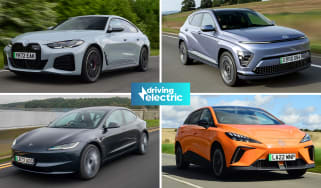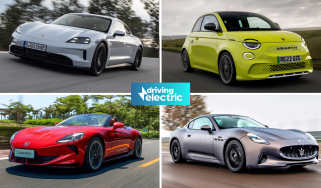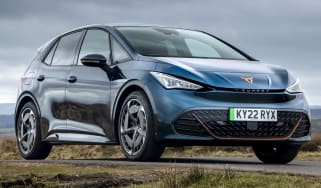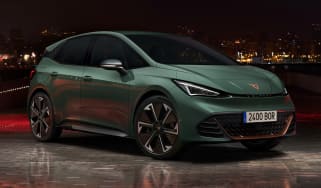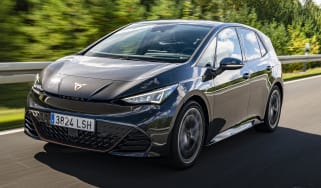Cupra Born review
Taut handling and adventurous styling help Cupra’s first electric car stand out from its Volkswagen ID.3 sibling
Pros
- Well equipped base model
- Decent ride and handling
- Better interior than VW ID.3
Cons
- Top models lose fifth seat
- Only slightly quicker than ID.3
- Some rivals offer faster charging
|
Car type |
Range |
Wallbox charge time |
Rapid charge time |
|
Electric |
260-335 miles |
9hrs 15mins (0-100%, 7.4kW) |
35mins (5-80%, 125kW) |
Cupra Born verdict
It may be dressed from head to toe in bronze accents, but Cupra has truly struck gold with its first electric family car. Despite being cheaper than the Volkswagen ID.3 on which it’s based, the Cupra Born is more fun to drive and has a plusher, more interesting interior – with tech that actually works. The boot is a bit on the small side, though, and we still think it’s ridiculous that top-of-the-range 77kWh models only have four seats. While e-Boost Borns manage to straddle the line between sporty family car and true electric hot hatch, we think the base V1 model represents superb value-for-money in this space and with the added practicality of five seats is a great alternative for those not taken by the onslaught of fashionable zero emissions SUVs.
Range details, specs and alternatives
Meet the Cupra Born: a sportier, Spanish alternative to the Volkswagen ID.3. It’s a family hatchback which, until recently, seemed like a bit of a dying breed. However, there are now plenty of options to choose from in the EV market, with the Cupra Born rivalling the likes of the Renault Megane E-Tech, Hyundai Ioniq 5 and, perhaps more notably, the MG4.
Peel away all the flashy copper trim and you’ll find the Cupra Born shares its MEB underpinnings with the ID.3. Like the VW, the Born is available with two battery sizes: 58kWh and 77kWh. While the smaller battery can be had with either a 201bhp or a 228bhp e-Boost electric motor on the rear axle, the larger of the two is only offered in sportier e-Boost form.
Performance is strong, if not quite on the level of a true electric hot hatch like the 428bhp MG4 XPower; all models reach 62mph in around seven seconds and are limited to a top speed of 99mph. Cupra says examples specified with the 58kWh battery offer around 260 miles of range, while the larger battery pack is said to offer up to 335 miles on a charge – significantly more than a similarly-priced Vauxhall Astra Electric.
Looking beyond the technical details, the Cupra Born is currently offered in three different trim levels: V1, V2 and V3. The newest of the trio, V1 trim acts as the entry point into the Born lineup and is only available with the smaller battery and less-powerful electric motor. As you’ve probably guessed looking at the figures above, this isn’t exactly a bad thing; combine this with the V1’s competitive price and lengthy equipment list and you’ll see why it’s our pick of the range.
As standard, all Cupra Born models get LED exterior lighting, a 12-inch infotainment system with sat nav, Apple CarPlay and Android Auto, dual-zone air conditioning, a heated steering wheel, adaptive cruise control, lane-keep assist and a reversing camera. Stepping up to V2 trim adds things like larger wheels, a head-up display and heated seats, while top-spec V3 cars boast luxuries like suede and leatherette upholstery, electrically adjustable massage seats.
Click here to see why you can trust DrivingElectric reviews, or for a more detailed look at the Cupra Born, read on for the rest of our in-depth review...

